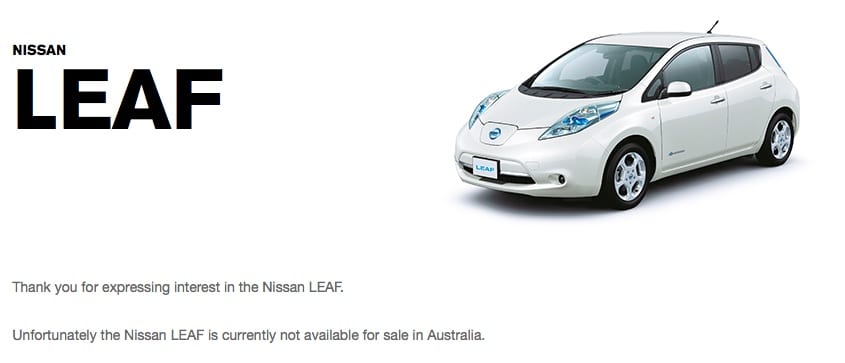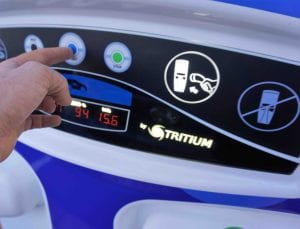News that deliveries to Australia of the Tesla Model 3 – the company’s first sub $60,000 electric vehicle – will not begin until 2019, nearly 3 years after enthusiasts put down a refundable deposit, shows just how far Australia has slipped in the race to vehicle electrification.
The rollout of the Model 3 is being described as the electric vehicle equivalent of the iPhone moment. If Tesla gets this right, and manages to master the challenges of mass-market production, that moment will have arrived. If it doesn’t, it is likely to be merely delayed and taken by another company or companies.
But consider the irony: In four months time, Australia will be home to the biggest lithium ion battery installation in the world, but it will also be among the last developed countries to take delivery of the world’s first mass-market electric vehicle made by the same company.
Australia is the only country in the world that actually has all the resources within its boundaries to create a battery storage industry – the minerals, cobalt and graphite and lithium, as well as the infrastructure and the manufacturing know-how.
So much so, that Australia could have one, or even two battery manufacturing plants (gigafactories) in place before an EV market takes off.
And while Queensland is building the world’s longest electric super-highway, and WA is also investing in a major charging network, they may seem like roads to nowhere given the small number of vehicles likely to use it.
Here’s the depressing news about the Australia EV market, and one that is only likely to get worse before it improves.
EV and PHEV sales in Australia actually fell in 2016, by nearly 25 per cent, and the early indications are for a similar fall in 2017. In Europe, it is estimated that 133,000 EVs and PHEVs were sold in the first half of the year.
Across the world, it is expected that one million EVs and PHEVs will be sold in 2017. Australia’s share should be around 15,000 if it was pulling its weight, according to Behyad Jafari, the head of the newly formed Electric Vehicle Council.
But in Australia in 2016 there were just three models available for less than $60,000: the Nissan Leaf, the plug-in hybrid SUV, Mitsubishi Outlander, along with the Renault Kangoo ZE commercial vehicle.
However, both the Leaf and the Outlander sold out their Australian stocks by mid-year (see below) and the Renault Kangoo ZE is a van that is only available through special arrangement with Renault.
Right now, there are 16 EVs available in Australia, and none of these are below $60,000. Indeed, most are well above $100,000 – they include 5 BMWs, 4 Mercedes, two Porsches, an Audi, a Volvo and the two Teslas (Model S and X).
The new model Nissan Leaf and the new model Hyundai Ioniq will address this shortage some time in 2018, with the Model S coming the following year the only other new car that will fit in below the $60,000 range.
It doesn’t bode well for Australia to keep up with other major developed economies, or even India and China, the two biggest markets for electric vehicles. India has discussed banning petrol and diesel car sales by 2030, China wants 35 million electric vehicles by 2020.
Norway and the Netherlands, as we discussed on Friday, have banned such sales from 2025, England by 2040, France by 2045.
Some – like Beyond Zero Emissions – suggest that Australia could make a transition as quick as Norway, but it would need action to begin now.
Not just electric highways and charging stations, but incentives to encourage the big manufacturers to bring their new models to Australia. Without a good market, there is zero chance of costs falling to the levels where they could be a mass market offering and compete with petrol cars.
“What we require is some short term incentives,” says Jafari, of the EVC. “We haven’t seen them in Australia.”
These would include exemptions to taxes , such as the FBT, as well as reductions in stamp duty and registration costs. Local councils could help with parking. “Without this support, it is a big risk for the manufacturers to bring mass market car to Australia,” Jafari says.
Jafari says that to reach “critical” mass Australia will need to reach 5,000 sales a year, and measures to incentivise car fleets would be the most likely avenue.
What it would need most is some sort of target, such as vehicle emissions standards – but the response in conservative media and politicians when a government thought bubble was branded a “carbon tax” on cars, illustrates the barriers, despite the overwhelming public support for EVs.
Indeed, it seems that the incumbent motor industry, just like the electricity sector, is focused on protecting its own – the massive supply chain, the dealerships, the spare parts and maintenance business.
Australia has become the land of burning policy ideas. At federal level, there are no long term emissions targets, no carbon price, no long term renewables targets, and efforts to introduce energy efficiency, housing standards and cleaner cars have been rejected – despite the overwhelming calls of any number of studies.
So, if you are one of the many who has resolved to make their current car the last internal combustion engine vehicle before the switch to EVs, better check it in for some more maintenance. That will make at least one industry sector happy.













